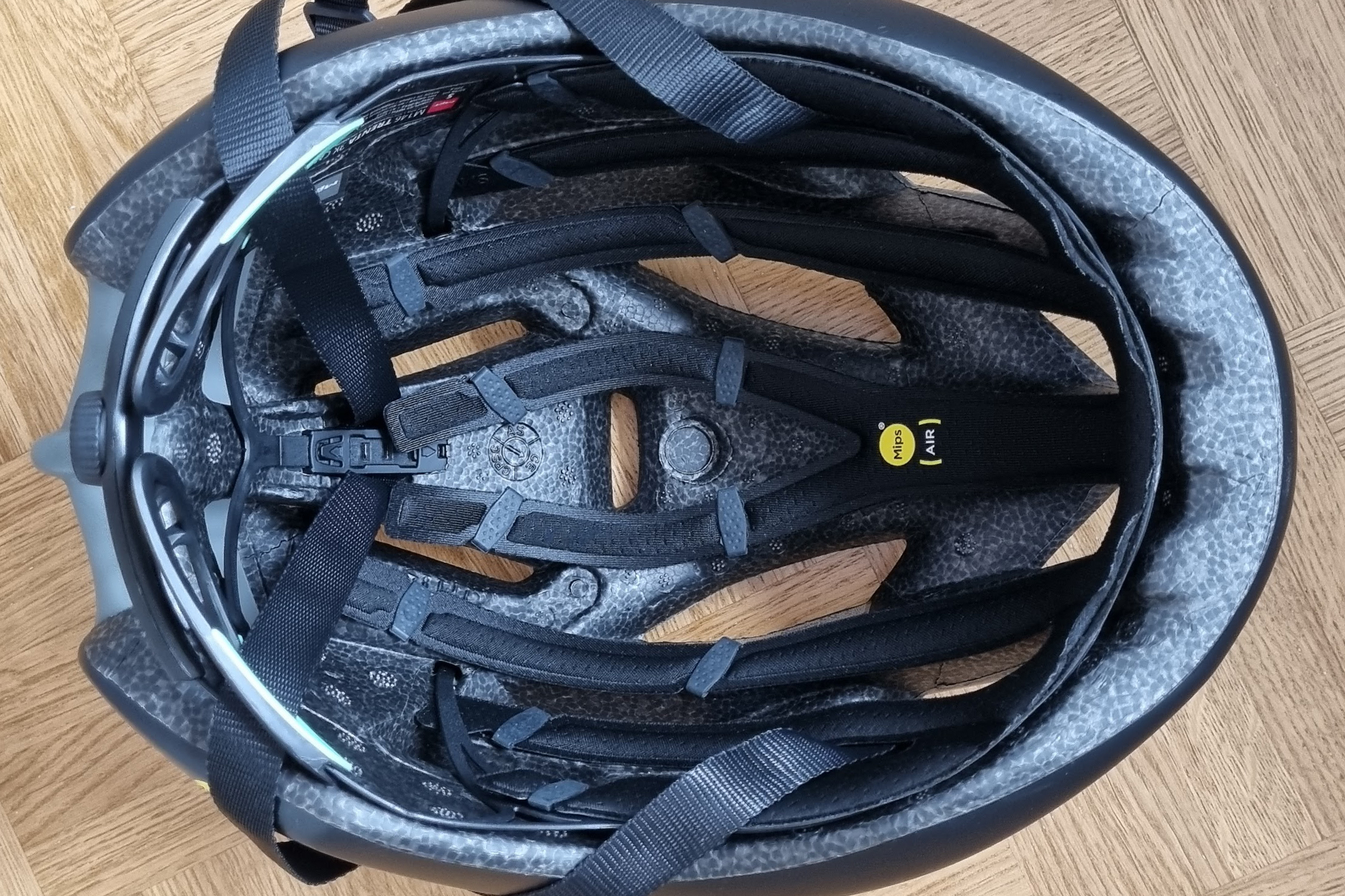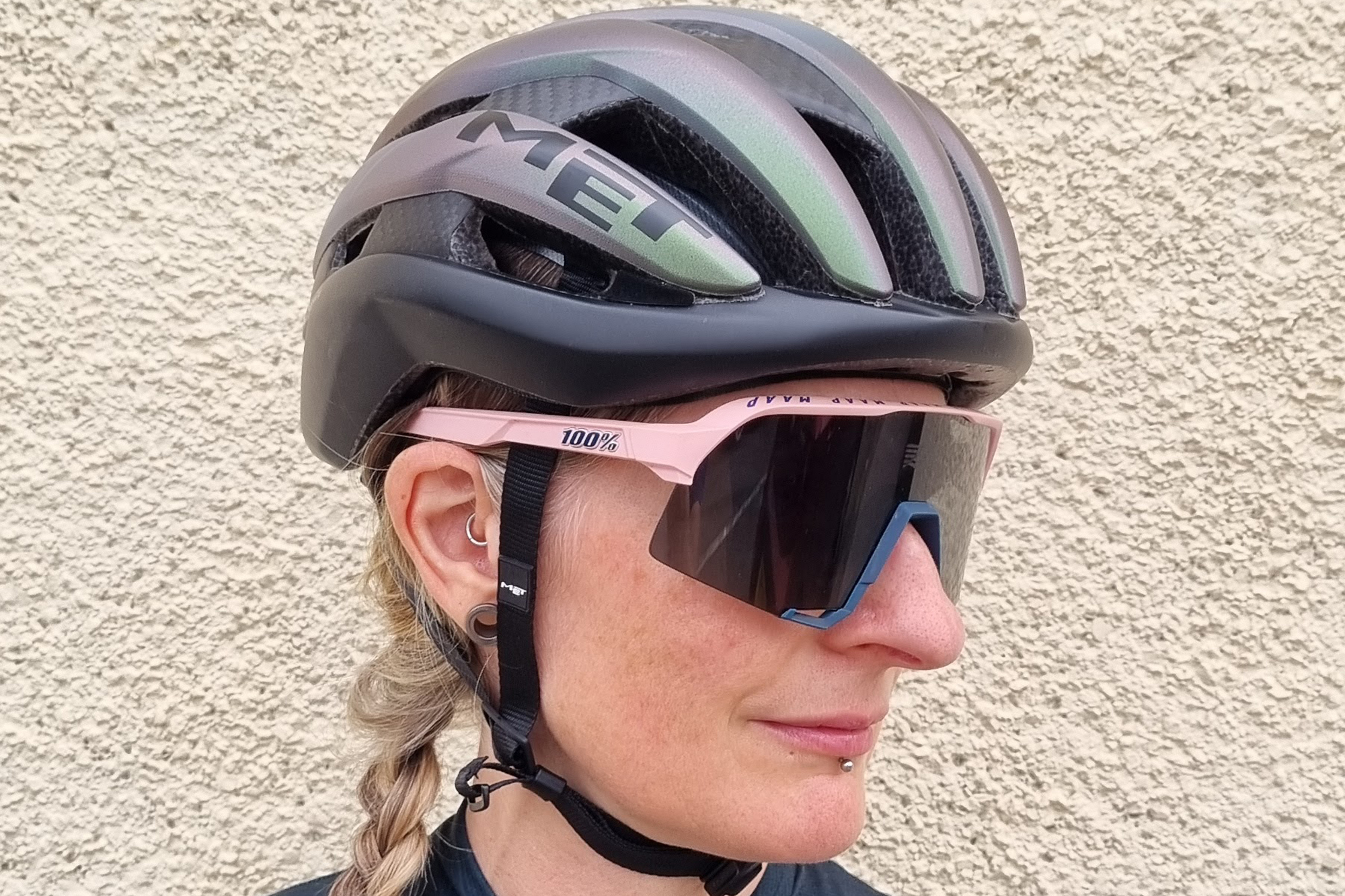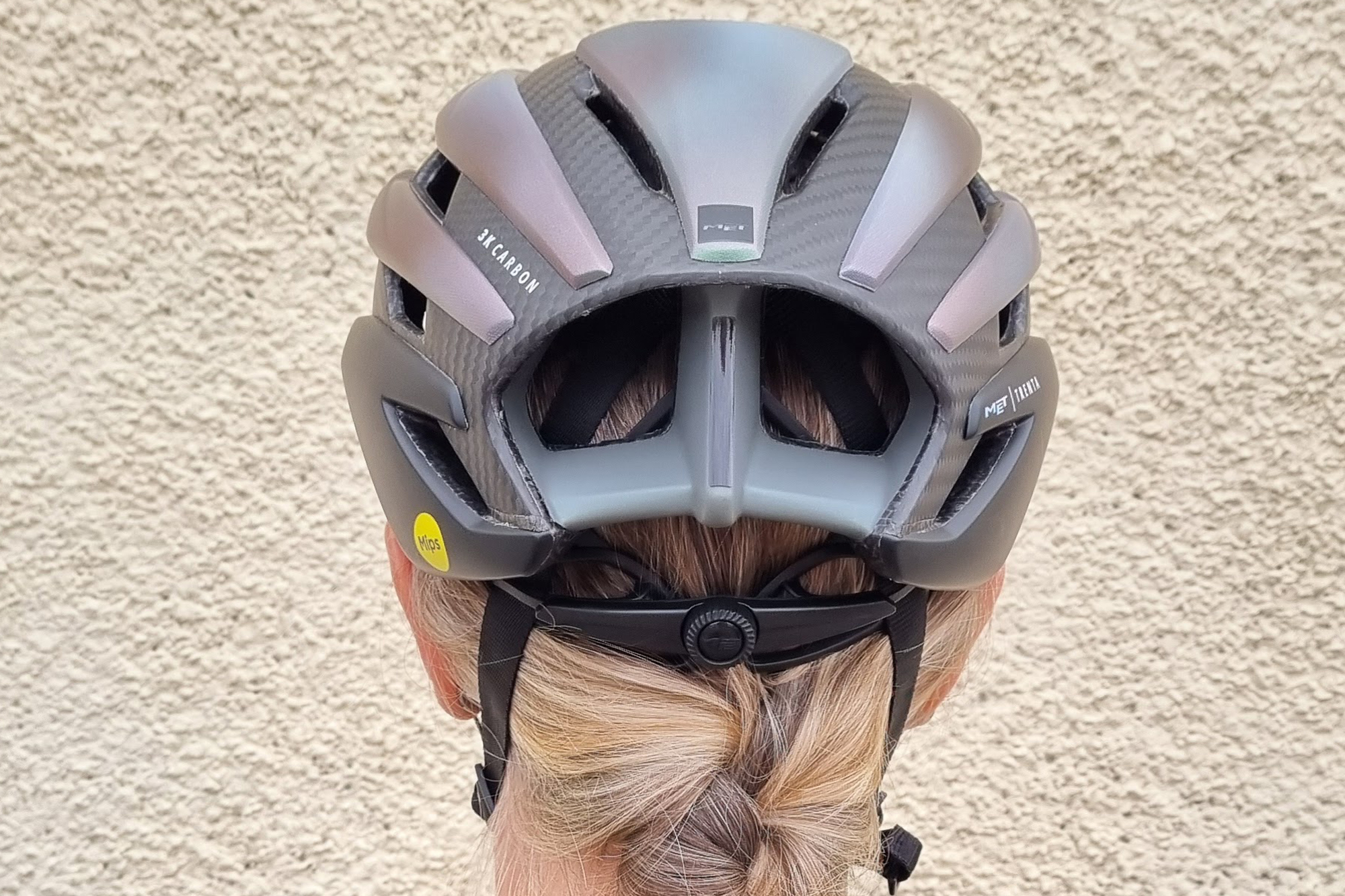A semi-aero helmet that incorporates Mips Air, the Met Trenta 3k Carbon Mips is the brand’s most advanced road offering to date and its palmares is impressive. In fact, Tadej Pogačar has been wearing this same helmet since his signing with UAE Team Emirates in 2019. It’s highly ventilated and, although not a dedicated aero helmet, it still incorporates aero-optimised features.
The aesthetics are clean and classic and, in my opinion, it’s one of the nicest looking helmets out there. This is in no small part due to the smart colours available and the raw carbon fibre that can be seen running through the external shell. Nothing much has changed in the looks department since its release in 2017, with it retaining its refreshingly classic aesthetic.

The Met Trenta 3k carbon is well ventilated and offers plenty of adjustability
(Image credit: Philip Glowinski)
It looks good and feels great to wear, like all the best road bike helmets, but there’s a price to pay for the style and comfort — this helmet is definitely a bit of an investment.
Construction
As you would expect, protection is top notch. The helmet received a 5 star safety rating from Virginia Tech and uses the Mips Air system – the lightest and most advanced rotational impact system from the third-party company. Unlike other Mips, the protection is built into the padding so there’s no need for an additional layer. This keeps bulk down, weight low, and doesn’t negatively impact other features such as ventilation and fit. By integrating the low friction polycarbonate layer into the helmet pads and adding unique couplings which enable movement in all directions, the Mips Air system is individual to each helmet model and size, so fit, performance and protection are equal across the board.

Met’s Trenta 3k carbon uses Mips Air, which is integrated into the padding to keep bulk down and weight low
(Image credit: Cat Glowinski)
The Trenta 3k was the first helmet in the WorldTour to use carbon fibre and this is still a fairly unique aspect. According to Met this allows a 20% reduction in EPS foam and means a smaller proportion of the shell is made up of in-mould polycarbonate, without compromising strength or energy absorption. The clearly visible 3K weave not only improves safety and reduces weight and bulk, but also gives the helmet an edge in terms of looks.

There’s a clearly visible carbon weave that means EPS foam and polycarbonate could be reduced without compromising strength
(Image credit: Cat Glowinski)
It’s very well ventilated, with 19 vents in total. This includes a NACA (or scoop) vent on top that’s meant to create a Venturi effect. In Layman’s terms, the positioning of this vent causes hot air to be sucked out of the exhaust ports at the rear of the helmet, reducing turbulence and keeping your head cool. Met states that the internal channelling means only 30% of your head is in contact with the helmet, also to aid airflow.
The Manta is billed as Met’s fully aero helmet and the Trenta as its climbing helmet, which also claims aerodynamic benefits. Well, it certainly looks very aero, with an elongated profile and Kamm tail, and has been wind tunnel developed and tested, but the associated claims are hard to prove or quantify.
There’s a lot of adjustment possible in the Trenta 3k, so it should fit a range of head shapes within the circumferences quoted for each size. The 360° Safe-T Orbital Fit System can be adjusted up and down, and horizontally in and out, and a rubberised dial allows micro adjustment to secure the helmet.
The ride
Aesthetics are subjective but they’re also important, particularly when it comes to road cycling helmets. In reality, if a helmet doesn’t look good, it’s likely to put many people off, regardless of any technology claims. I really like the look of this helmet, and have actually been pining after one for quite some time.
The helmet I reviewed was Motion Blur (which is my personal favourite), but there’s not a bad colour in the range, and the helmet has a slick yet not-over-engineered-looking design, with the clearly visible carbon weave adding a nice finishing touch.

The Met Trenta 3k carbon helmet comes in a range of stunning colourways but my favourite is Motion Blur
(Image credit: Philip Glowinski)
I’m normally a size small, and the Met Trenta in this size fit me perfectly in every way. It immediately sat central and straight, and felt very light, with a narrow profile that prevents the mushroomy look.
Adjustment is super easy using the rubberised rear dial, which I imagine works well even in the rain or with sweaty hands, although I’m yet to test this out as once it was in place the dial kept it tight. As it’s tightened, the helmet feels secure, and the padding is comfortable with even pressure distribution.
Vertical and horizontal adjustment in the cradle is possible, although a little awkward, and although I didn’t have to make any real adjustment here, it will ensure a good fit across a range of head sizes and shapes. The Air Lite straps are light and flexible, which is particularly useful for someone like me who doesn’t like the pressure of a solid strap under the chin. Splitters make these straps easy to dial in for comfort.

The Met Trenta 3k carbon helmet has a rubberised rear dial and is ponytail compatible, although I tend to wear a low plait
(Image credit: Philip Glowinski)
The helmet is sold as ponytail compatible although I tend to just wear a low plait. I did check if it worked though — and it did — and if you’ve adjusted the cradle downwards and therefore lowered the dial, it would be even easier to use.
The dedicated sunglasses port gets a massive thumbs up from me; I don’t think I’ve ever had a helmet advertising this feature that actually does a solid job of holding the glasses stable. The vents into which the sunglasses’ arms go even have little grippers for making sure they stay in place, which additionally help you find the correct vents when you want to take your glasses off mid ride. It’s nice not to have to keep checking my sunglasses aren’t hanging halfway out on rough roads, ready to fall and get scratched or worse.
In the few months that I’ve had this helmet, I’ve managed to test it in a good range of conditions. I’ve used it on an outdoor velodrome, around the roads of Kent during spring, and up some mountains in France on blisteringly hot and slightly cooler days. It was also my choice for a hilly summer road race. The advertised ventilation is excellent; you can really feel the air flowing over your head and keeping you cool. The internal channel system that pulls air inwards, upwards and out through the top is clearly doing its job, and the low weight (coming in at 220 grams for a size small, the same as the claimed weight) makes you really forget you’re wearing it. I can’t personally say whether the helmet does reduce drag, but it definitely looks fast.

It’s a good looking helmet and the ventilation really works
(Image credit: Philip Glowinski)
I had a couple of very small gripes with the Trenta that prevent it from being perfect. Firstly, when removing it, it often caught on my hair. I’m not sure if this is the Mips Air, the cradle, or a combination of the two, but it just means being a bit more careful when taking the helmet off, and it won’t affect everyone. Definitely not a deal breaker. Secondly, although the helmet sat perfectly, when in combination with my Oakley Jawbreakers there was sometimes a bit of a gap, which I’m not a fan of. However, a little extra adjustment meant I could get rid of this gap and I didn’t have the same issue with my 100% sunglasses.
Value and conclusions
This helmet gets almost everything right, and my few small issues are fairly subjective. It has a low profile, is comfortable and airy, and offers maximum protection with its five star safety rating.
It’s impossible to say whether the Met Trenta 3k is actually fast, but the drag-reducing features do lean towards some watt savings. It’s also so light and airy, you’ll stay cool while you’re putting in efforts up a hot climb, likely allowing you to go faster.
However, the price of this helmet (£300/$399/€330) may make you think twice before committing, and there are other, cheaper options available. The standard Met Trenta still has Mips (albeit a different version) and comes in at £225/$299/€260. So if the carbon weave and exceptionally low weight are not your priorities, this makes a good alternative.
Specialized’s S-Works Prevail is a highly ventilated helmet with a similar spec. It weighs a bit more (30 grams more in a size small) but is slightly cheaper at £250.
Kask’s Protone Icon is similarly priced to the Prevail (£245.00) but its weight sits more in line with the Trenta 3k. It’s another well-ventilated lid, but with a different safety system that’s not quite as well regarded as Mips. Of course, it still meets all the safety standards as you would expect.
Specs
- Sizes: S M L
- Weight: 220 for size S
- Mips: Yes. Mips Air
- Colours: Motion Blur, Blue Iridescent, Red Iridescent, White Silver Metallic, Matt Black, Vanilla Ice Gold
